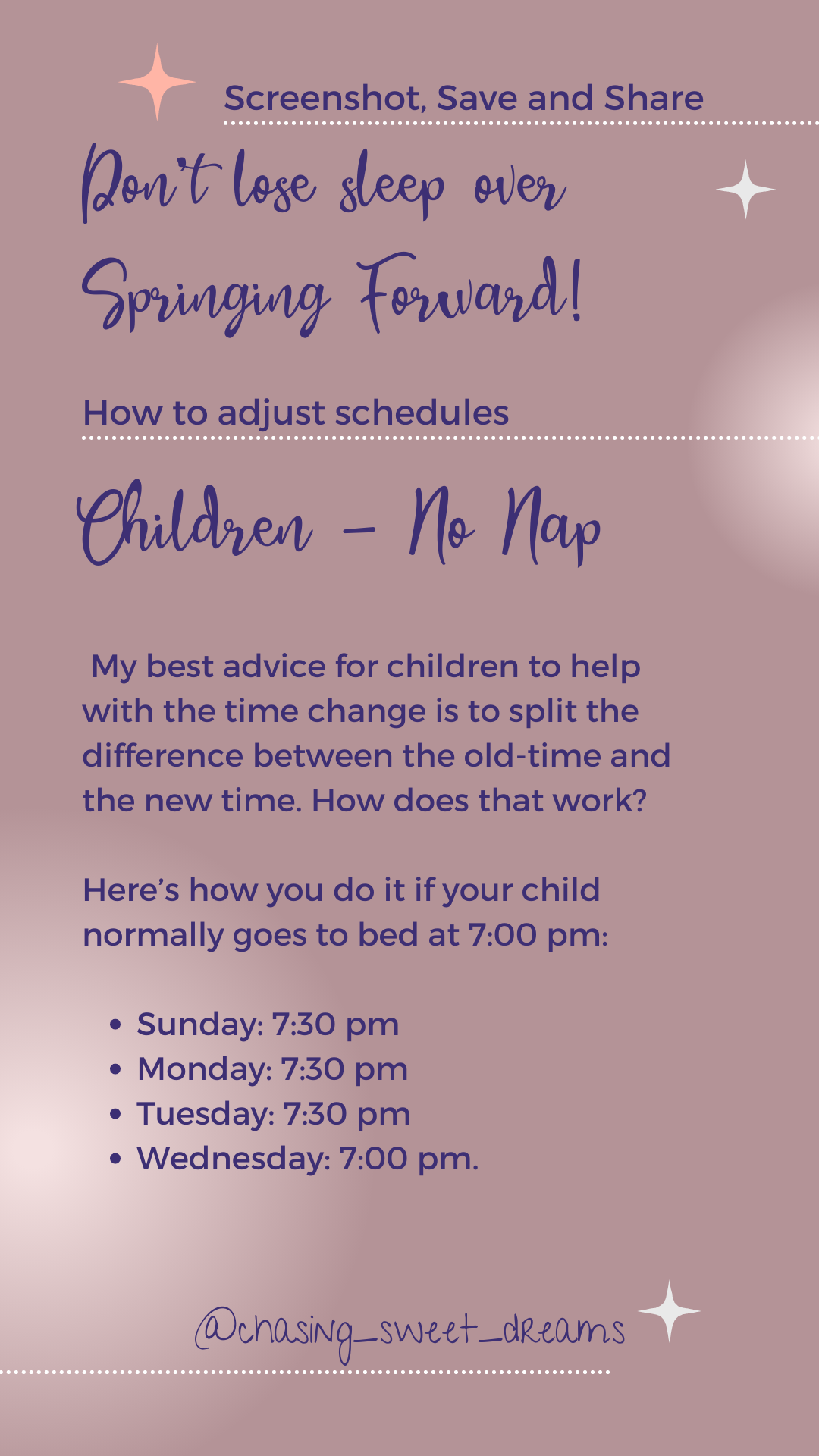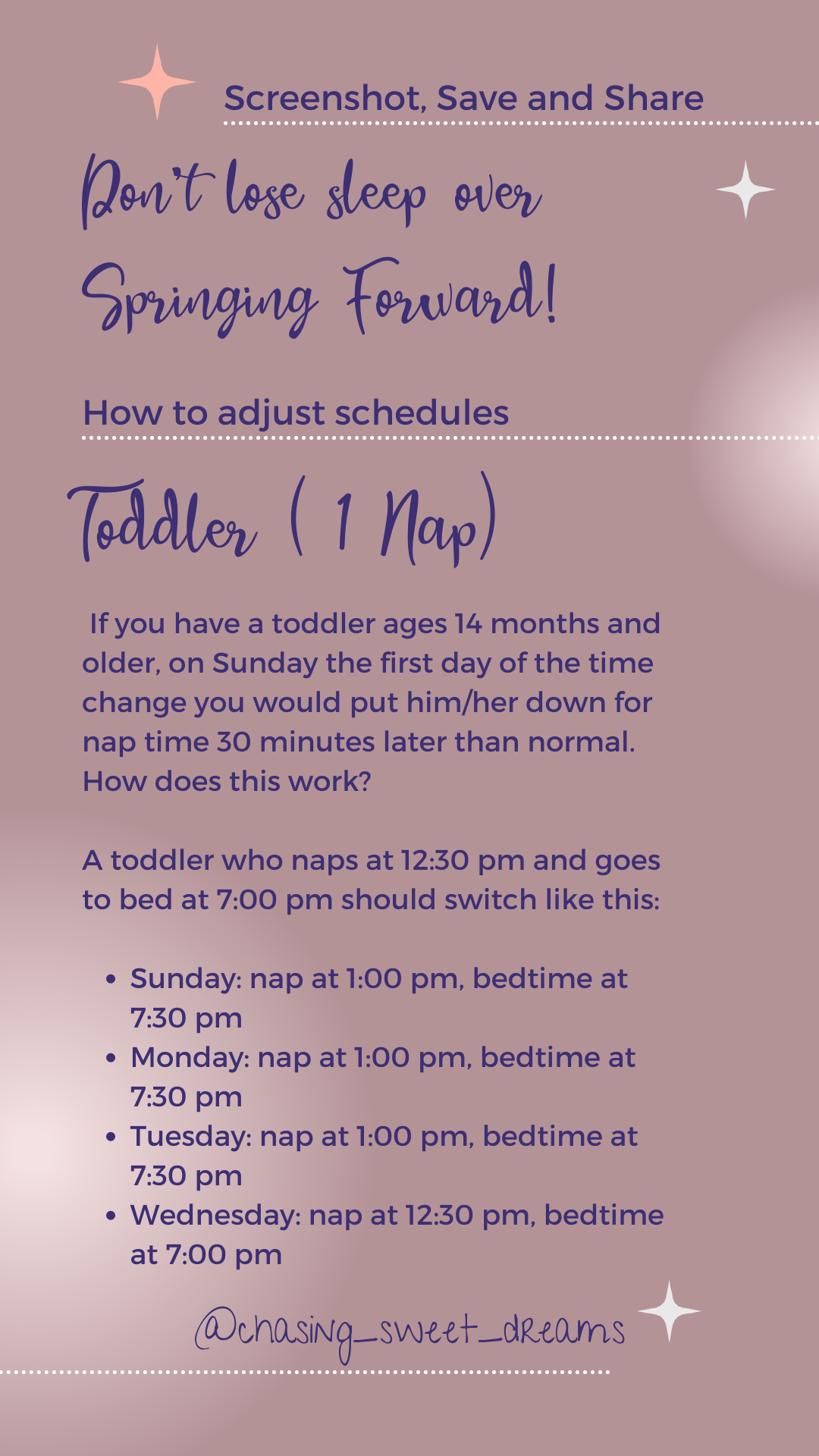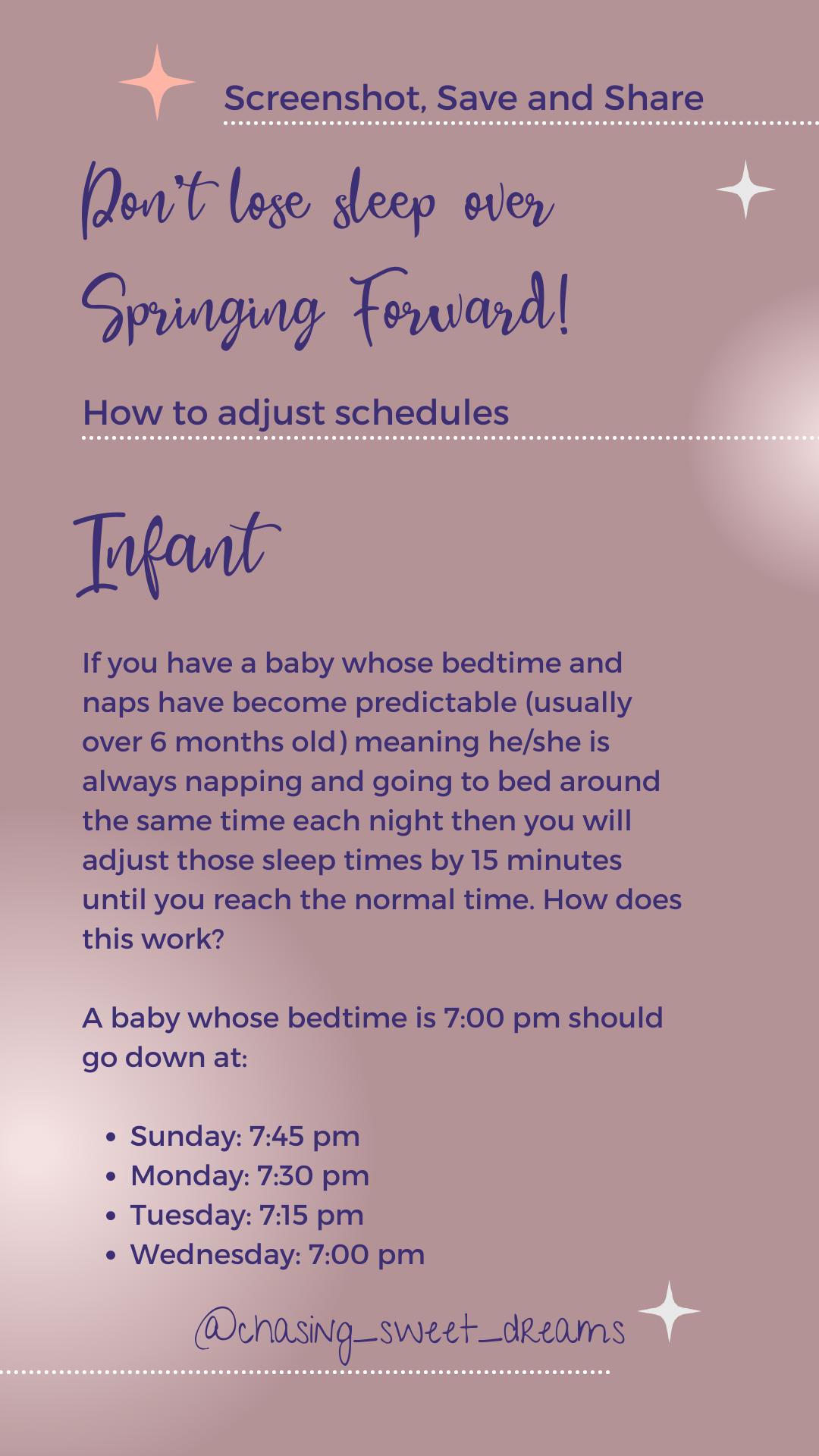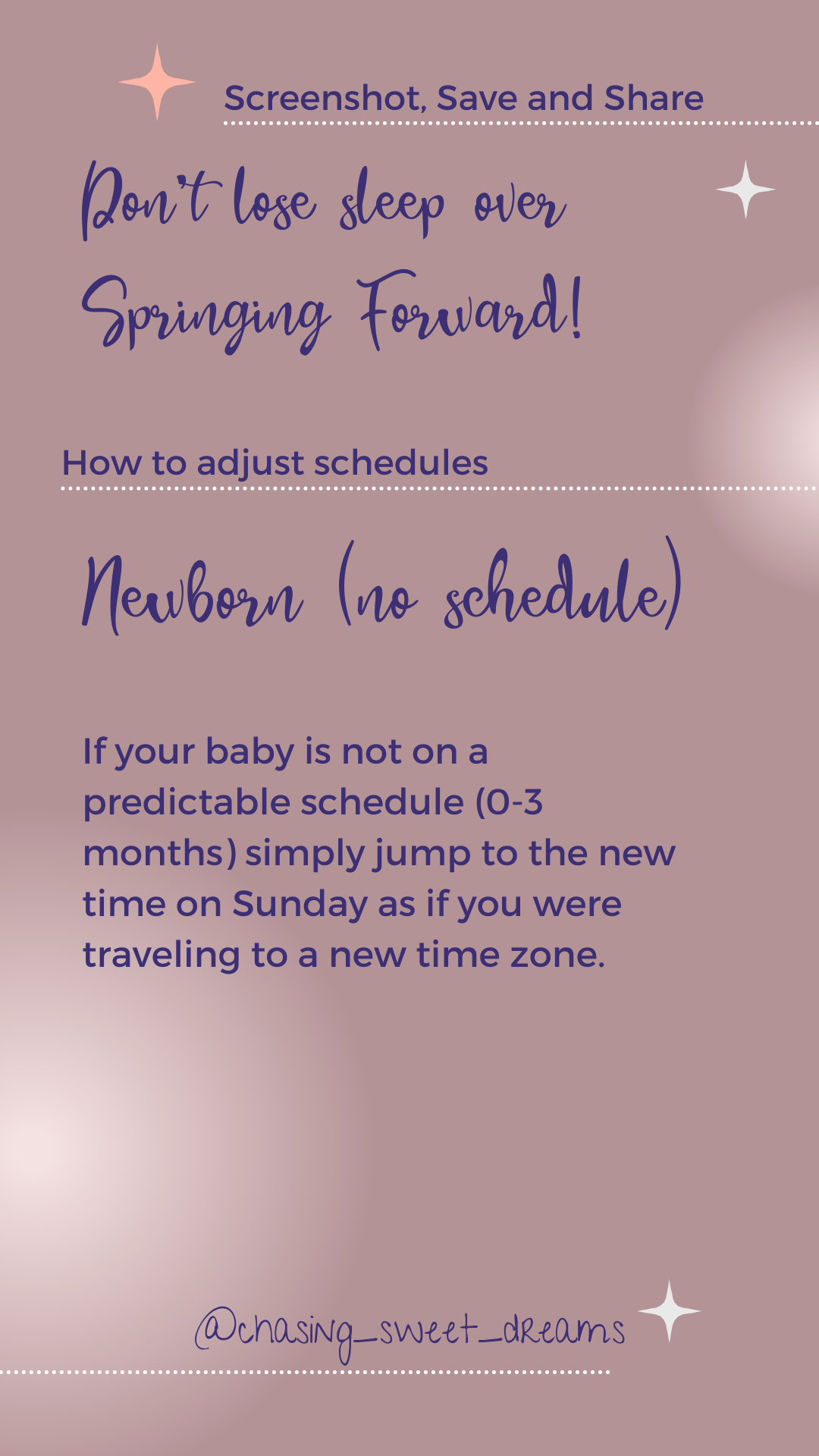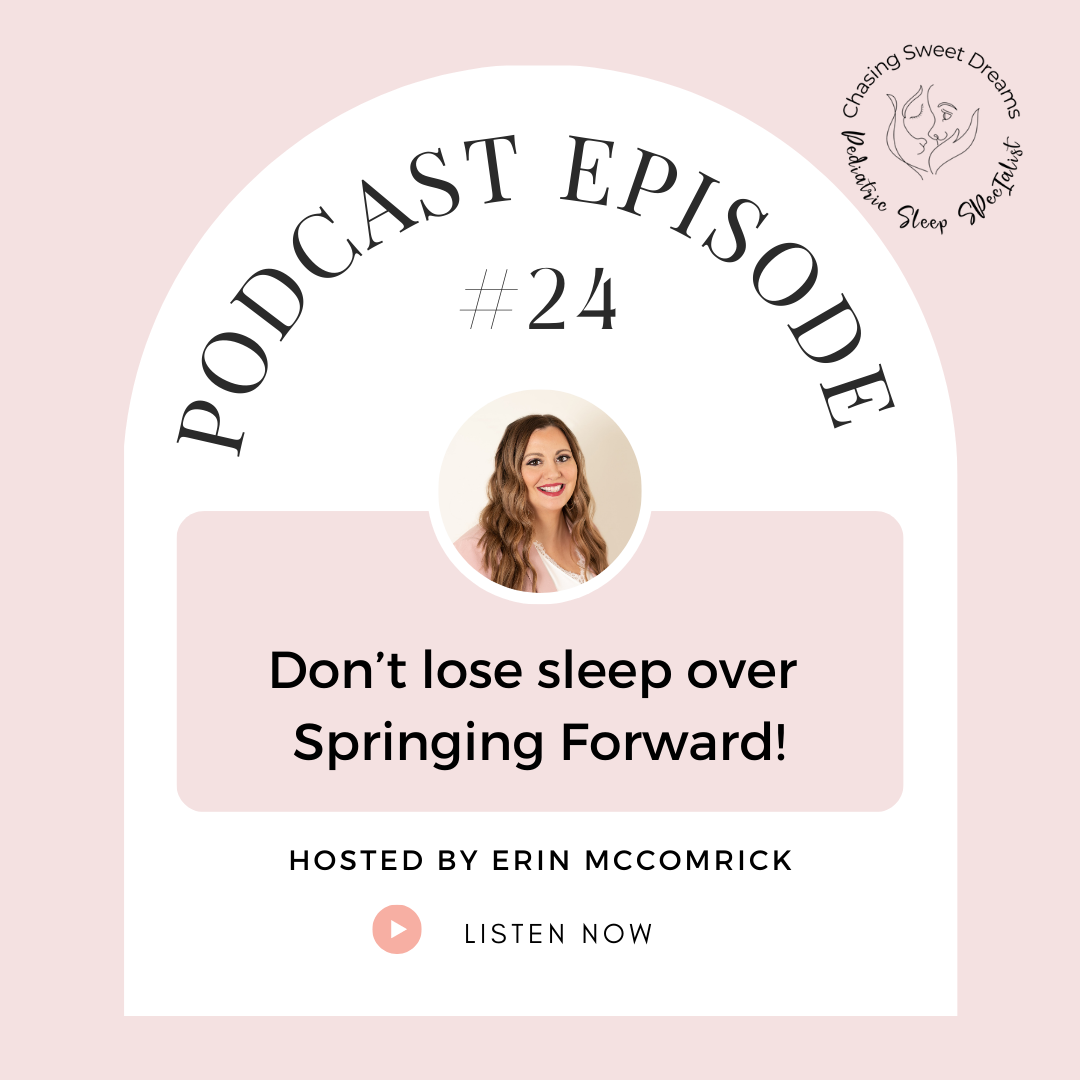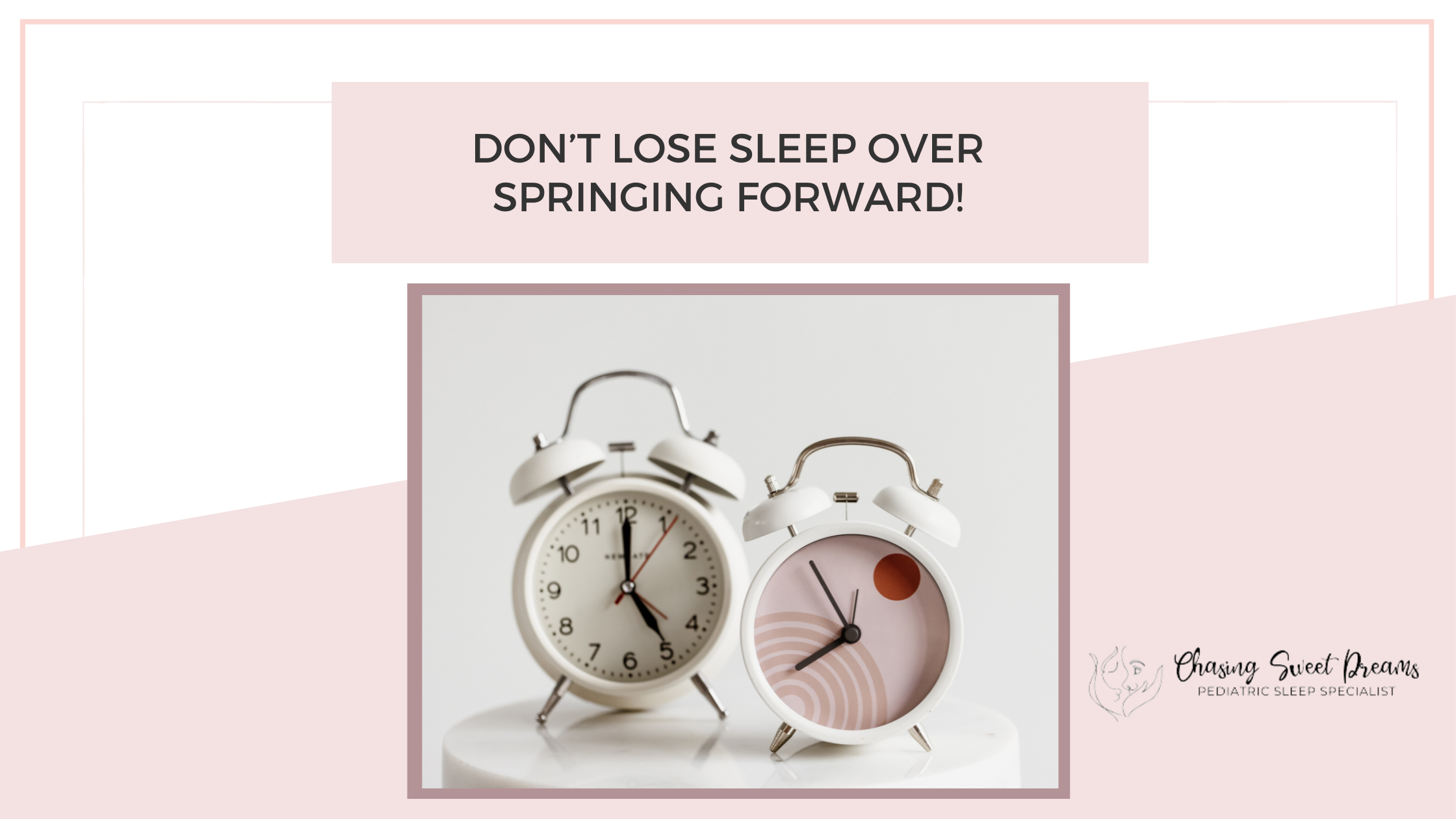 Updated 3/6/23
Updated 3/6/23
Don’t lose sleep over Springing Forward!
While the Fall Back of the clocks in November has most parents running for the hills (especially if your child is already an early riser), the Spring Forward that occurs each March has most adults rejoicing. No 5:12 AM staring you in the face this time! Cue the parental high-fives!
Yes, the moving forward of the clocks by one hour is generally much easier on families with young children than the dreaded fallback. However, if the upcoming time change still has you a bit nervous about disruptions in your child’s sleep schedule, here are some strategies for managing:
Listen to the podcast
Older Children (no nap)
My best advice for children to help with the time change is to split the difference between the old time and the new time. How does that work?
Here’s how you do it if your child normally goes to bed at 7:00 pm:
- Sunday: 7:30 pm
- Monday: 7:30 pm
- Tuesday: 7:30 pm
- Wednesday: 7:00 pm.
Toddlers
If you have a toddler ages 14 months and older, on Sunday the first day of the time change you would put her down for nap time 30 minutes later than normal. How does this work?
A toddler who naps at 12:30 pm and goes to bed at 7:00 pm should switch like this:
- Sunday: nap at 1:00 pm, bedtime at 7:30 pm
- Monday: nap at 1:00 pm, bedtime at 7:30 pm
- Tuesday: nap at 1:00 pm, bedtime at 7:30 pm
- Wednesday: nap at 12:30 pm, bedtime at 7:00 pm
 Infants
Infants
If you have a baby whose bedtime and naps have become predictable (usually over 6 months old) meaning he is always napping and going to bed around the same time each night then you will adjust those sleep times by 15 minutes until you reach the normal time. How does this work?
A baby whose bedtime is 7:00 pm should go down at:
- Sunday: 7:45 pm
- Monday: 7:30 pm
- Tuesday: 7:15 pm
- Wednesday: 7:00 pm
If your baby is not on a predictable schedule (0-3 months) simply jump to the new time on Sunday as if you were traveling to a new time zone.
Bonus tips
Don’t forget about the importance of a sleep-inducing room environment! The beginning of Daylight Savings means Mr. Sun starts his workday a whole lot earlier. Avoid early morning wakes with blackout blinds and blackout curtains (or a product like the Blackout EZ Window Cover or the SleepOut Curtains), and consider a sound machine to block out the noise of those beautiful but oh-so-noisy birds nesting on your kiddo’s windowsill. Dark and quiet is best for sleep!
Final Thoughts
It may take babies and toddlers a bit more time to fall asleep. This is totally normal as they are not as tired as the time first shift. It usually takes about a week for children and babies to completely adjust to the new time, for some children it can take up to a month.
I have so much more I want to teach you about baby and toddler sleep and how you can help your baby!
Follow me on Instagram and check out my daily stories.
Do you like what I have to say? Send me an email or set up a discovery call! I am here for you!
Sending sleepy vibes and sweet dreams your way!
Erin McCormick
Your Pediatric Sleep Specialist
